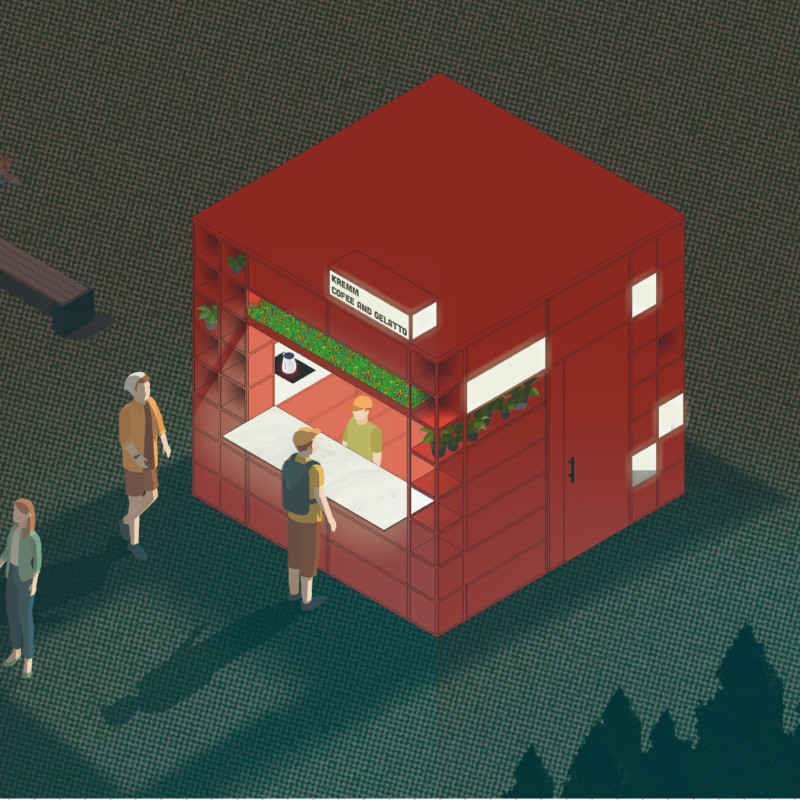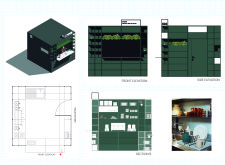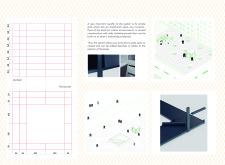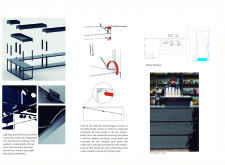5 key facts about this project
Modular Design and Flexibility
The kiosk is constructed using a 3x3 meter modular system based on the New Order framework produced by HAY. This system allows for an efficient layout that maximizes the available space while offering multiple configuration options. The ability to assemble and disassemble the structure with relative ease enhances its adaptability, catering to different environments and specific site conditions. The design prioritizes accessibility and user interaction, positioning the kiosk as a focal point in community spaces.
Sustainable Integration
One of the key features of the Kremm kiosk is its incorporation of living elements. Planters are strategically placed above the service counter, allowing for the growth of herbs and small plants. This aspect not only contributes to the aesthetic quality of the structure but also aligns with contemporary sustainability practices. The use of plants supports local biodiversity and provides an opportunity for users to engage with their environment more intimately. The materials selected, including a combination of steel, composite panels, glass, and wood, further enhance the kiosk's durability while maintaining a modern aesthetic.
User Experience and Interaction
The internal layout of the kiosk facilitates efficient service delivery while promoting social interaction among patrons. A service counter is positioned to ensure that customers have a clear and inviting experience, with sufficient storage integrated into the design for operational efficiency. Optional external seating features encourage gathering, allowing visitors to enjoy their refreshments in a communal atmosphere. This focus on user experience reflects a growing trend in architecture where public spaces are designed not only for aesthetic enjoyment but also for community engagement and interaction.
The Kremm Coffee and Gelato Modular Growing Kiosk presents a contemporary approach to retail architecture with its modular system, sustainable practices, and user-focused design. For more detailed insights into the architectural plans, sections, and design elements, explore the project presentation.


























